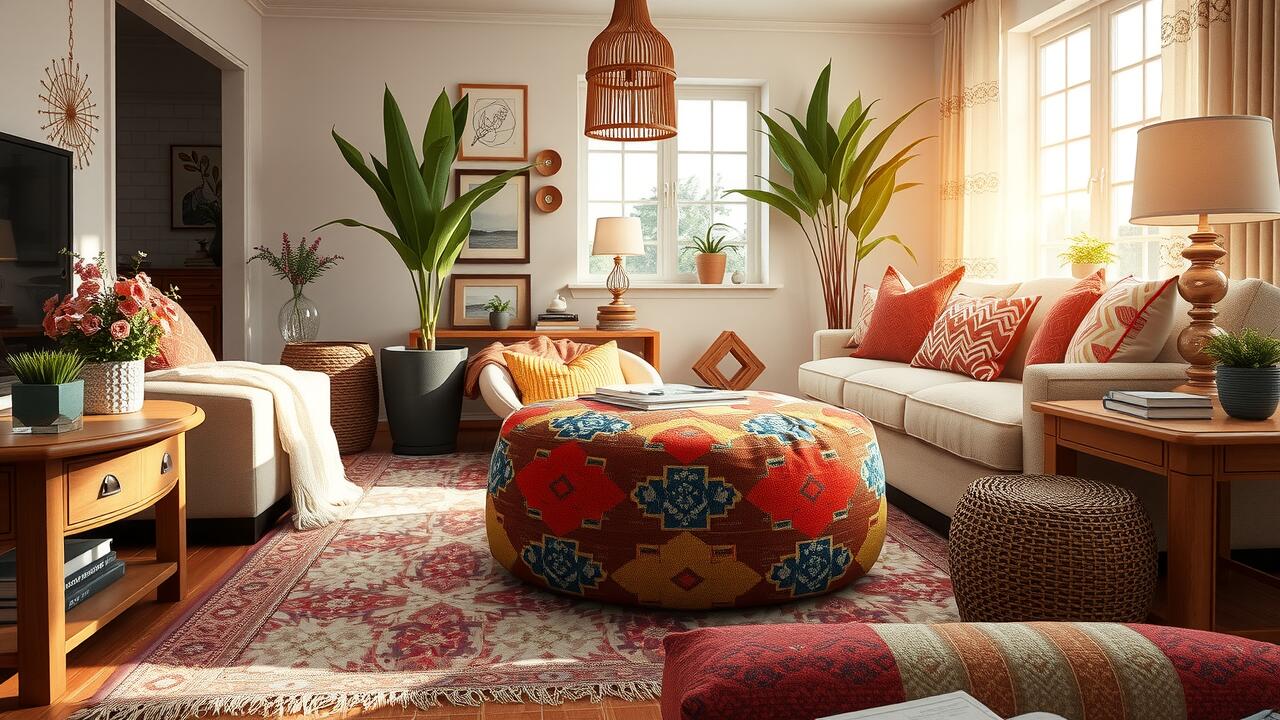
Table Of Contents
Repurposing Household Items
Transforming old household items into stuffing for a Moroccan pouf can be an eco-friendly and cost-effective solution. Tattered clothes, unused linens, and even old pillows can find new life within the pouf. These materials not only provide the necessary bulk but can also add a personal touch to the piece, reflecting your style and memories associated with the fabrics.
Using repurposed items also encourages creativity. You might consider cutting worn-out garments into strips or balls and mixing them with softer materials like towels or blankets to achieve the ideal firmness. This approach not only prevents waste but can also offer varying textures, enhancing the comfort and aesthetic of your pouf.
Creative Stuffing Solutions from Old Fabrics
Old textiles can be transformed into excellent stuffing materials for a Moroccan pouf. Consider using worn-out clothes, bed linens, or even ancient curtains. Each piece of fabric can introduce unique textures and colors, which can enhance the overall look of your pouf. Cut the fabrics into smaller pieces to ensure they spread evenly inside, providing the desired level of comfort and support.
In addition to clothing and linens, consider repurposing old quilts or blankets. These have the added benefit of being thicker, contributing to a more solid structure. Layering different materials can also create interesting dimensions within the pouf. This approach not only reduces waste but allows for personalization in a way that store-bought fillers cannot achieve.
Commercial Fill Products
When considering options for filling a Moroccan pouf, commercially available products are an excellent choice. These options include foam inserts, polyester fill, and shredded memory foam. They provide consistent support and comfort, allowing the pouf to retain its shape over time. Many brands offer fill specifically designed for poufs, ensuring appropriate density and flexibility for seating or footrest purposes.
Purchasing from reputable suppliers can enhance the experience, as the quality of these materials significantly impacts durability. Foam products tend to be lightweight and resistant to flattening, while polyester fill can be more affordable and still provide good comfort. Shredded memory foam offers a unique touch, contouring to the body while maintaining breathability. When selecting a commercial fill, it is essential to consider the level of support needed and the pouf's intended use.
Evaluating Quality and Durability
When selecting materials for your Moroccan pouf, consider their quality and longevity. High-quality stuffing ensures that the pouf maintains its shape and support over time. Look for materials that are resistant to wear and tear, particularly if the pouf will be used frequently. Natural fillings such as cotton or wool typically provide excellent resilience, while synthetic options like polyester offer ease of care and moisture resistance.
Durability also varies between stuffing alternatives. While some materials compress over time, making them less effective, others retain their loftiness longer. Testing the materials for softness and firmness is essential. A well-stuffed pouf should feel comfortable yet supportive, adjusting to your needs without sacrificing structural integrity. Prioritizing both quality and durability will lead to a more satisfying and long-lasting pouf experience.
Seasonal Variations in Stuffing
Different seasons can influence the choice of stuffing materials for your Moroccan pouf. In warmer months, lighter filling options such as shredded cotton or eco-friendly foam can offer better breathability and a cooler experience. These materials not only keep the pouf lightweight but also provide comfort during hot weather. When the temperatures drop, opting for heavier fillings like memory foam or polyester can enhance insulation, ensuring a cozy and inviting feel for those chilly evenings.
Additionally, varying moisture levels throughout the seasons can impact the suitability of certain stuffing. In humid climates, materials that resist mold and mildew, such as synthetic fibers, are preferable. During dry winters, natural options like wool may be more effective, as they can help maintain warmth. Understanding these seasonal factors can guide your stuffing choice, ensuring that your pouf remains a comfortable and stylish addition to your home throughout the year.
Choosing Materials for Different Climates
The climate of your local area can significantly impact the comfort and usability of your Moroccan pouf. For warmer climates, breathable materials such as cotton or linen are ideal. These options promote airflow, helping to keep the pouf cool during hot months. Certain biodegradable fillers like shredded natural fibers can also work well, providing comfort while ensuring the pouf remains lightweight and easy to move.
In contrast, colder climates demand more insulating materials that retain warmth. Consider using fillings like shredded memory foam or polyester batting. These options provide cozy support and help maintain a comfortable temperature. Additionally, heavier fabrics for the pouf cover can add an extra layer of insulation, making the seating area more inviting during chilly weather.
FAQS
What are some common household items I can use to stuff my Moroccan pouf?
You can repurpose items such as old blankets, towels, clothing, or even pillows to provide a comfortable and eco-friendly stuffing solution for your Moroccan pouf.
Is it a good idea to use old fabrics for stuffing?
Yes, using old fabrics can not only save money but also give your pouf a unique feel. Just make sure the materials are clean and in good condition to ensure comfort and durability.
What commercial fill products are recommended for stuffing Moroccan poufs?
Popular options include polyester fiberfill, foam filler, or shredded memory foam. These products can provide a consistent shape and comfort for your pouf.
How can I evaluate the quality of stuffing materials for my pouf?
Look for materials that are durable, maintain their shape well, and provide good support. Reading product reviews and checking for warranties can also help assess quality.
Should I consider seasonal changes when choosing stuffing for my pouf?
Yes, depending on the climate, you may want to choose lighter materials for warmer seasons and denser, warmer options for colder seasons to enhance comfort and usability.